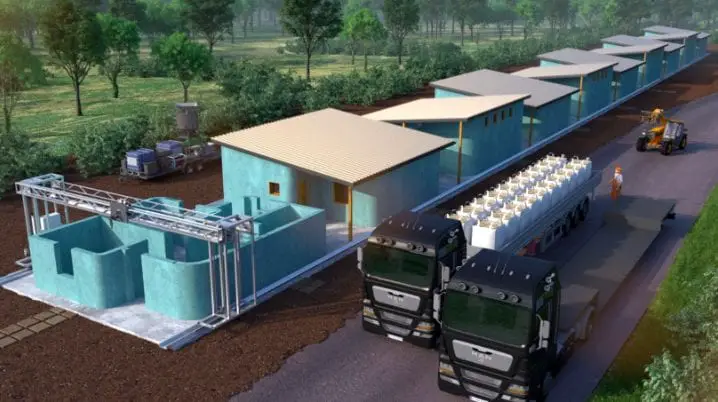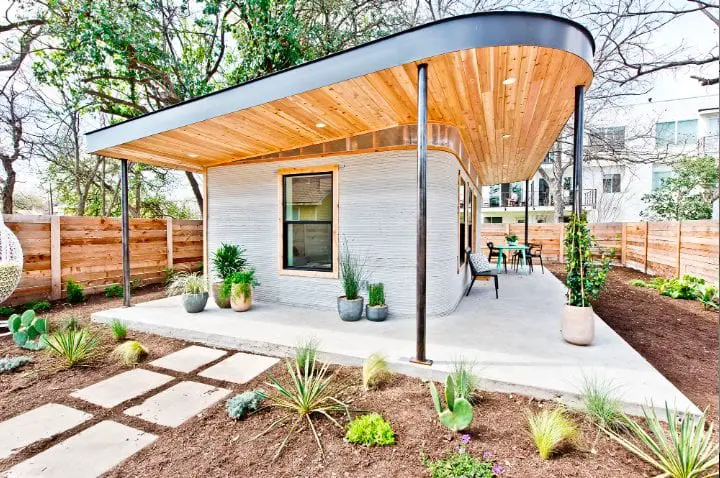
The world’s first 3D-printed neighborhood is set to begin construction within months. The concept is being brought to life via a collaboration between ICON, an Austin-based construction tech startup, New Story, a San Francisco-based housing nonprofit, and Fuseproject, a San Francisco-based design firm.
The initial project launched at SXSW 2018, where ICON and New Story introduced Chicon House, America’s first permitted 3D-printed home. Chicon House was printed in concrete layers in a matter of weeks using ICON’s Vulture printer. The home was also low-waste, energy-efficient, and easily customizable, created with the housing needs of the developing world in mind.
Though the model print cost approximately $10,000, ICON was quickly able to reduce printing costs to $4,000. The surprisingly warm, roomy, and inviting model home generated widespread interest and praise.

After partnering with industrial designer Yves Béhar’s Fuseproject, the team moved to bring their designs to rural, low-income Latin Americans, an unlikely but deserving audience for breaking technological innovation.
Project leaders recently unveiled their first blueprint for a fully 3D-printed community in an undisclosed Latin American location. The neighborhood will include more than 50 homes, all of which can be printed within 24 hours using ICON’s newly released Vulcan II printing technology. The village will house families living on less than $200 per month, many of whom currently live in low-quality pre-fab housing tied to their employers.
Vulcan II has a user-friendly interface; by design, it is easily operated and largely automated. In addition, the printer can be readily transported by a single truck and uses locally sourced concrete. These attributes are crucial in ensuring the project’s long-term sustainability with local talent in remote locations. Though resources like water, electricity, and technical skills can be limited in third world countries, ICON’s printing technologies were created with these hurdles in mind.
According to New Atlas, “The design for this village was a collaborative effort, with the farmers and palm-weavers that will call it home taking an active part in the process through workshops on the ground, and the designers incorporating their habits, cultures and needs into the finished product.” Future residents can look forward to a number of customized features, including built-in counters, seating, and storage. The 600-800 square foot homes will include outdoor spaces for cooking, gardening, and raising chickens. Other aspects of the design take local rainfall and ventilation needs into account.
The cost and pacing of construction have long been obstacles in the struggle to address global housing needs. This team hopes to answer those problems, and, in the process, to “deliver the promise of a life beyond survival.”
